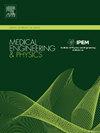Trends and developments in 3D photoacoustic imaging systems: A review of recent progress
IF 1.7
4区 医学
Q3 ENGINEERING, BIOMEDICAL
引用次数: 0
Abstract
Photoacoustic imaging (PAI) is a non-invasive diagnostic imaging technique that utilizes the photoacoustic effect by combining optical and ultrasound imaging systems. The development of PAI is mostly centered on the generation of a high-quality 3D reconstruction system for more optimal and accurate identification of tissue abnormalities. This literature study was conducted to analyze the 3D image reconstruction in PAI over 2017–2024. In this review, the collected articles in 3D photoacoustic imaging were categorized based on the approach, design, and purpose of each study. Firstly, the approaches of the studies were classified into three groups: experimental studies, numerical simulation, and numerical simulation with experimental validation. Secondly, the design of the study was assessed based on the photoacoustic modality, laser type, and sensing mechanism. Thirdly, the purpose of the collected studies was summarized into seven subsections, including image quality improvement, frame rate improvement, image segmentation, system integration, inter-systems comparisons, improving computational efficiency, and portable system development. The results of this review revealed that the 3D PAI systems have been developed by various research groups, suggesting the investigation of numerous biological objects. Therefore, 3D PAI has the potential to contribute a wide range of novel biological imaging systems that support real-time biomedical imaging in the future.
三维光声成像系统的趋势与发展:最新进展综述
光声成像(PAI)是一种利用光声效应,结合光学和超声成像系统的非侵入性诊断成像技术。PAI的发展主要集中在生成高质量的三维重建系统,以更优化和准确地识别组织异常。本文献研究分析2017-2024年PAI的三维图像重建。本文将收集到的有关三维光声成像的文章根据研究方法、设计和目的进行分类。首先,将研究方法分为实验研究、数值模拟和数值模拟实验验证三大类。其次,基于光声模态、激光类型和传感机制对研究设计进行了评估。第三,将收集到的研究目的归纳为7个小节,包括图像质量改进、帧率改进、图像分割、系统集成、系统间比较、提高计算效率和便携式系统开发。这篇综述的结果表明,3D PAI系统已经由不同的研究小组开发,表明了对许多生物物体的调查。因此,3D PAI有潜力为未来支持实时生物医学成像的新型生物成像系统做出广泛贡献。
本文章由计算机程序翻译,如有差异,请以英文原文为准。
求助全文
约1分钟内获得全文
求助全文
来源期刊

Medical Engineering & Physics
工程技术-工程:生物医学
CiteScore
4.30
自引率
4.50%
发文量
172
审稿时长
3.0 months
期刊介绍:
Medical Engineering & Physics provides a forum for the publication of the latest developments in biomedical engineering, and reflects the essential multidisciplinary nature of the subject. The journal publishes in-depth critical reviews, scientific papers and technical notes. Our focus encompasses the application of the basic principles of physics and engineering to the development of medical devices and technology, with the ultimate aim of producing improvements in the quality of health care.Topics covered include biomechanics, biomaterials, mechanobiology, rehabilitation engineering, biomedical signal processing and medical device development. Medical Engineering & Physics aims to keep both engineers and clinicians abreast of the latest applications of technology to health care.
 求助内容:
求助内容: 应助结果提醒方式:
应助结果提醒方式:


